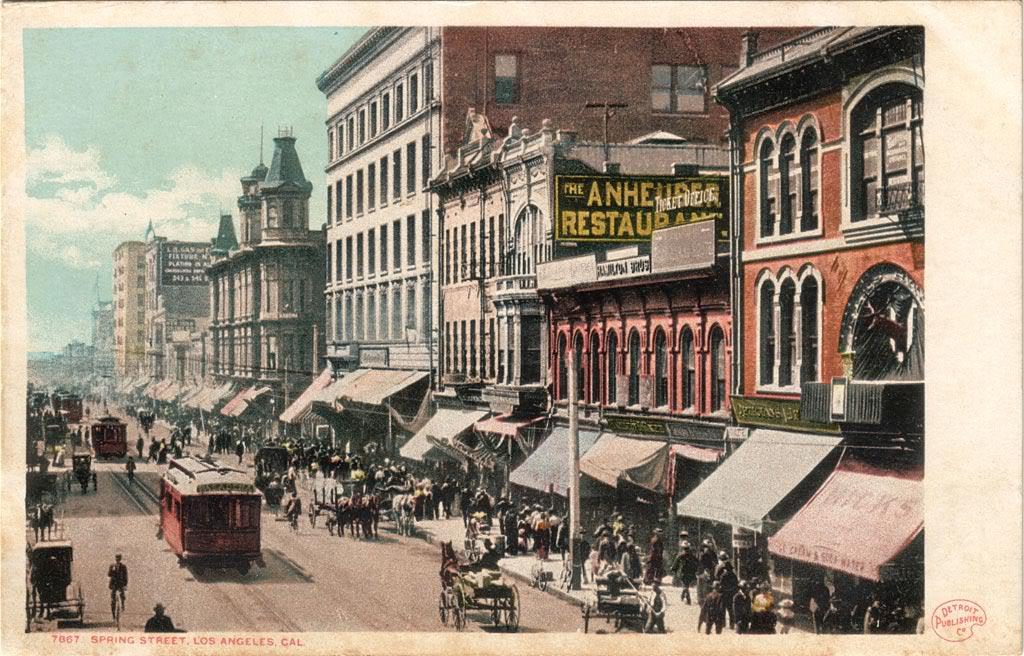Here's an interesting pair of postcards from the "aught" years of the 20th century. Both were taken from approximately the middle of the 200 block of Spring Street toward its intersection with Third Street. The top one faces the east side of Spring; the bottom one, the corresponding west side.


Note, in the one at top, the caption says, "...South from Elk's Hall..." Now, at far right in the bottom postcard, see the balcony with the mounted deer's head in the archway? (You may have to enlarge the pic to see it.) Logically, that must be the Elk's Hall! Curiously, the balcony and archway are both hung with black crepe, indicating mourning, and there's a portrait of the deceased in the center of the balcony's railing. I wonder who that could have been...
The bottom image is definitely older. I can
maybe see one automobile among all those carriages and trolleys, so the photo was probably taken close to the turn of the last century. (So, could the deceased perhaps be President McKinley, assassinated in '01?) The top one could very well be right up-to-date with its 1907 inscription. At least three or four motor vehicles in that one.
What's still standing now? Not much. Less on the west side of the street, for sure. As far as I can tell, only the
Douglas Building (the 5-storey block just left of center in the bottom postcard) remains today. On the east side of Spring, in the distance, there's the
Hellman Building touched by the bottom tip of the hand-penned "7", and behind it, at the SE corner of Spring and Fourth, still stands the
Braly Building. (Sorry, I obstinately refuse to call it the Continental Building. This was originally and always will be the Braly to me!)
Another pop quiz! Easy question: what is the name of the building at the extreme left edge of the top postcard – at the NE corner of Third and Spring? A bit more challenging: in the bottom pic, what's the building across Third Street from the Douglas? Don't be fooled! There were several similar-looking structures within a three-block radius of here in the old days.
Anyway, I just love the vibrant crispness of both of these images – the bustling street, the crowded sidewalks – how genuinely dynamic and
alive it all appears. There's so much to appreciate in these old postcards, isn't there?











